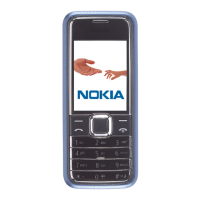
Do you have a question about the Nokia 7310 Supernova and is the answer not in the manual?
| Technology | GSM |
|---|---|
| 2G bands | GSM 900 / 1800 / 1900 |
| GPRS | Class 10 |
| EDGE | Class 10 |
| Status | Discontinued |
| SIM | Mini-SIM |
| Display type | TFT, 16M colors |
| Display size | 2.0 inches |
| Resolution | 240 x 320 pixels |
| Pixel density | 200 ppi |
| Phonebook | 1000 entries |
| Call records | 20 dialed, 20 received, 20 missed calls |
| Internal Memory | 30 MB |
| Primary Camera | 2 MP |
| Alert types | Vibration; Downloadable polyphonic, MP3 ringtones |
| Loudspeaker | Yes |
| 3.5mm jack | No |
| WLAN | No |
| Bluetooth | 2.0, A2DP |
| Messaging | SMS, MMS, Email |
| Browser | WAP 2.0/xHTML |
| Games | Yes + Downloadable |
| Java | Yes, MIDP 2.0 |
| Battery | Removable Li-Ion 860 mAh battery (BL-4CT) |
| Stand-by | Up to 300 h |
| Announced | 2008, June |
| Dimensions | 106.5 x 45.4 x 11.95 mm |
| Weight | 83 g |
| Memory Card slot | microSD |
| Radio | Stereo FM radio, RDS |
| Colors | Blue |
Guidelines for safe phone activation, avoiding interference or danger.
Emphasizes obeying traffic laws and keeping hands free while driving.
Explains susceptibility of wireless devices to interference affecting performance.
Instructions to switch off device near medical equipment to prevent interference.
Rules for using wireless devices on aircraft to avoid interference.
Precautions against using the device at refueling points or near flammable substances.
Advises against using the device in areas where blasting operations are in progress.
Specifies that only trained personnel should service the product.
Guidance on using only approved accessories and batteries.
Information on PIN, PUK, and security codes for phone protection.
Step-by-step guide for inserting the SIM card and battery.
Instructions for inserting and using a microSD card for storage.
Important precautions for safely removing the memory card.
Procedure for charging the device battery using the provided charger.
Procedure for powering the device on and off.
How to activate flight mode for radio-sensitive environments.
Procedure for making emergency calls while in flight mode.
Methods to lock and unlock the phone's keypad to prevent accidental presses.
Various methods to initiate a phone call, including international dialing.
How to accept or terminate incoming or ongoing calls.
Assigning numbers to keys for quick dialing.
Creating and sending text and multimedia messages.
Step-by-step process to compose and send a message.
How to view received messages and respond.
Steps to compose and send emails directly from the device.
Process for downloading and responding to emails.
Saving, searching, and managing contact information.
Steps to add new contacts to phone or SIM memory.
Setting up and using Bluetooth connections.
Setting up PIN codes, call barring, and other security features.
Resetting the phone to its original factory state.
Taking pictures and recording video clips with the built-in camera.
Listening to music tracks and managing the music library.
Accessing internet services using the phone browser.
Details on charging, discharging, and battery care.
Precautions regarding interference with medical equipment.
Specific advice for users with implanted medical devices.
Safety procedures for areas with explosive atmospheres.
How to make emergency calls and important considerations.
Radio wave exposure guidelines and SAR limits for the device.